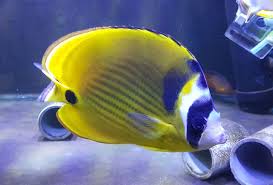
Rosa Canina, commonly known as dog rose, plays a significant role in environmental conservation due to its unique ecological characteristics and contributions to ecosystem health. In this section, we will delve into the multifaceted role of Rosa Canina in protecting the environment and promoting biodiversity.
## 1. Habitat Restoration
Rosa Canina serves as a valuable species for habitat restoration initiatives, particularly in areas where natural habitats have been degraded or lost due to human activities. Its ability to thrive in various soil conditions and climates makes it well-suited for reforestation projects, erosion control efforts, and the restoration of disturbed ecosystems. By planting Rosa Canina in degraded or deforested areas, conservationists can help restore vital habitats for native wildlife and promote ecological balance.
## 2. Soil Stabilization
The extensive root system of Rosa Canina plays a crucial role in soil stabilization and erosion prevention. By anchoring soil particles and reducing surface runoff, Rosa Canina helps prevent soil erosion and loss of fertile topsoil, which is essential for maintaining soil fertility and supporting plant growth. Additionally, the dense vegetation cover provided by Rosa Canina helps protect vulnerable soil surfaces from erosion caused by wind and water, contributing to the overall health and stability of ecosystems.
## 3. Wildlife Habitat
Rosa Canina provides important habitat and food sources for a wide range of wildlife species, including birds, insects, and small mammals. The dense thickets formed by Rosa Canina bushes offer shelter, nesting sites, and protective cover for birds and small mammals, especially in areas where natural vegetation is scarce. Furthermore, the nutritious fruits produced by Rosa Canina serve as a vital food source for wildlife, supporting diverse populations of birds and mammals throughout the year.
## 4. Pollinator Support
The flowers of Rosa Canina attract a variety of pollinators, including bees, butterflies, and other insects, making it an essential plant for supporting pollinator populations. As pollinators visit Rosa Canina flowers to collect nectar and pollen, they facilitate the process of pollination, which is crucial for the reproduction of many plant species, including agricultural crops. By providing habitat and food for pollinators, Rosa Canina contributes to the health and resilience of pollinator populations and promotes ecosystem stability.
## 5. Carbon Sequestration
Like all plants, Rosa Canina plays a role in carbon sequestration, the process by which carbon dioxide is removed from the atmosphere and stored in plant tissues and soil. Through photosynthesis, Rosa Canina absorbs carbon dioxide from the air and converts it into organic matter, which is then stored in its leaves, stems, roots, and surrounding soil. By sequestering carbon, Rosa Canina helps mitigate climate change and reduce the concentration of greenhouse gases in the atmosphere, thereby contributing to efforts to combat global warming and its associated impacts.
## Conclusion
Rosa Canina plays a vital role in environmental conservation through its contributions to habitat restoration, soil stabilization, wildlife habitat provision, pollinator support, and carbon sequestration. By recognizing and harnessing the ecological value of Rosa Canina, conservationists and land managers can leverage its unique attributes to promote biodiversity, protect natural ecosystems, and mitigate the impacts of environmental degradation. By conserving and restoring Rosa Canina populations, we can ensure the continued health and resilience of ecosystems for future generations.
# The Role of Rosa Canina in Environmental Conservation (Part 2)
Continuing our exploration of the multifaceted role of Rosa Canina in protecting the environment, let’s delve deeper into its contributions to biodiversity conservation, ecosystem resilience, and sustainable land management practices.
## 6. Biodiversity Enhancement
Rosa Canina enhances biodiversity by providing habitat and food for a wide range of plant and animal species. Its presence in natural ecosystems promotes species richness and diversity by supporting a variety of vegetation types and creating microhabitats for specialized organisms. Additionally, the dense thickets formed by Rosa Canina bushes offer refuge and nesting sites for birds, mammals, and insects, contributing to the overall biodiversity of ecosystems.
## 7. Water Quality Improvement
The extensive root system of Rosa Canina helps improve water quality by stabilizing soil, reducing erosion, and filtering pollutants from runoff water. By preventing soil erosion and sedimentation in water bodies, Rosa Canina helps maintain the integrity of aquatic habitats and protects water quality for aquatic organisms. Furthermore, the vegetation cover provided by Rosa Canina helps regulate water flow, reducing the risk of flooding and soil erosion downstream, and promoting the recharge of groundwater resources.
## 8. Climate Resilience
Rosa Canina plays a role in enhancing climate resilience by contributing to ecosystem stability and adaptation. Its ability to thrive in a variety of environmental conditions, including drought-prone areas and degraded landscapes, makes it a valuable species for restoring resilience to ecosystems affected by climate change. By restoring degraded habitats, increasing vegetation cover, and sequestering carbon, Rosa Canina helps mitigate the impacts of climate change and enhances the resilience of ecosystems to extreme weather events and shifting climatic conditions.
## 9. Sustainable Land Management
Rosa Canina can be integrated into sustainable land management practices to promote ecosystem health and productivity. Its use in agroforestry systems, reforestation projects, and landscape restoration initiatives can help improve soil fertility, enhance biodiversity, and provide valuable ecosystem services. Furthermore, Rosa Canina’s economic value as a source of food, medicine, and other products can incentivize sustainable land management practices that support both environmental conservation and local livelihoods.
## 10. Education and Awareness
Rosa Canina serves as an educational tool for raising awareness about the importance of environmental conservation and biodiversity protection. By highlighting its ecological significance and practical applications in ecosystem restoration and sustainable land management, educational programs and outreach efforts can engage communities in conservation activities and inspire stewardship of natural resources. Additionally, promoting the cultural and aesthetic value of Rosa Canina can foster appreciation for the beauty and diversity of natural landscapes, encouraging greater support for conservation efforts.
## Conclusion
Rosa Canina plays a vital role in environmental conservation by contributing to biodiversity enhancement, water quality improvement, climate resilience, sustainable land management, and education and awareness. Its ecological versatility, economic value, and cultural significance make it a valuable asset for promoting ecosystem health and resilience in a changing world. By recognizing and harnessing the environmental benefits of Rosa Canina, we can work towards a more sustainable and resilient future for both people and nature.










